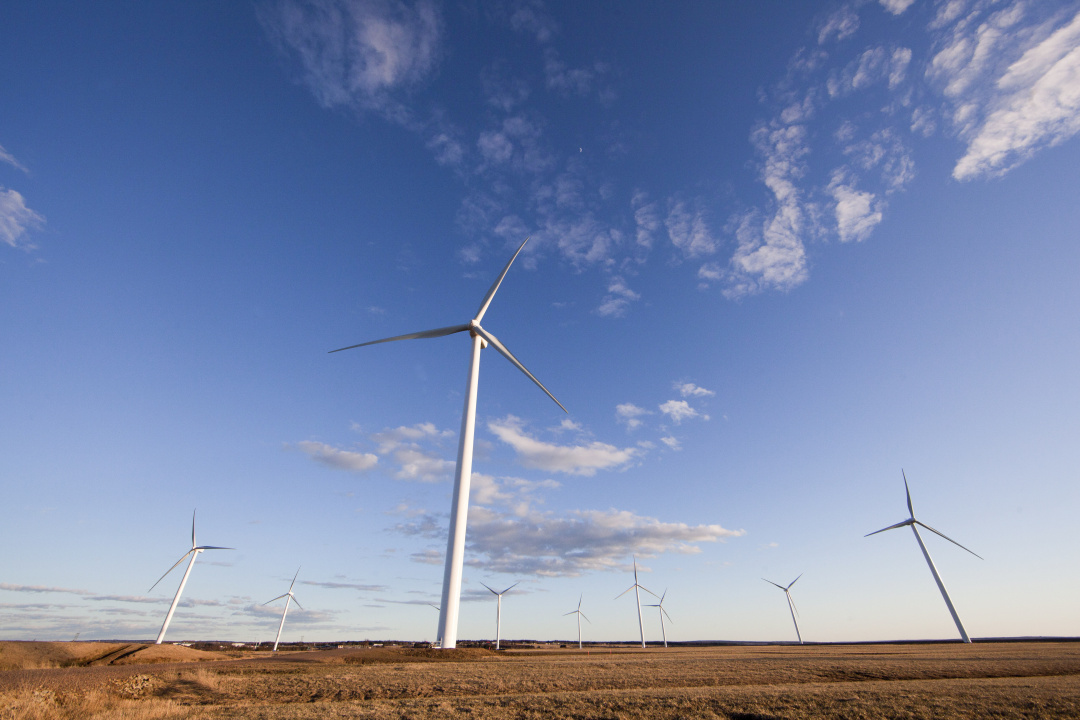Environmental Assessment Changes Reinforce Commitment to Fight Climate Change, Move to Clean Economy

Changes to the Province’s environmental assessment process announced today, May 8, will provide a more streamlined and clear path for clean energy projects. (Province of Nova Scotia / File)
Changes to Nova Scotia’s environmental assessment process will help speed up the province’s transition to clean energy, fight climate change faster, grow the economy and support sustainable development.
The changes create a more streamlined and clear path for clean energy projects, which will help Nova Scotia move to a clean economy faster, and make it easier for Nova Scotians to understand the environmental assessment process and be part of the consultation process.
Timothy Halman, Minister of Environment and Climate Change, announced the changes today, May 8.
“A modernized environmental assessment process supports the responsible use and development of our natural resources and will help transform Nova Scotia into a clean energy leader, while maintaining our high environmental standards,” said Minister Halman. “These changes will help ensure sustainable energy and economic security for Nova Scotians.”
Changes include:
- creating a clear path for clean energy projects by moving them to the Class I process
- streamlining the process for biomass projects, thereby creating new opportunities for the province’s forestry sector
- making the environmental assessment process easier to understand for both companies and the public
- new plain-language guidance for companies on Nova Scotia’s process and how to follow it
- companies must provide a plain language summary of their project benefits, impacts and how impacts will be managed, to be posted on the government’s webpage; this will make it easier for Nova Scotians to understand projects and participate in consultations
- adding 10 days to the Class I consultation period for the public and Mi’kmaq
- a new website with easy-to-understand information and tools to help Nova Scotians better understand the process and how to participate in it
- climate change is now listed in the Minister’s decision factors – this includes both the positive and negative impacts of a project on climate change
- clarifying the Minister’s ability to engage advisors, such as scientists, engineers and other experts as needed, to help thoroughly evaluate the project and inform the Minister’s decision.
Quotes:
“The environmental assessment changes, announced today, signal to the forest and energy sectors that the Nova Scotia government is committed to enhancing the economy and promoting sustainable development. These modifications streamline regulatory processes for low-risk biomass projects, incentivize investments in the forestry sector, ensure environmental protection and incorporate feedback from the public and the Mi’kmaq. Establishing markets for low-grade wood will subsequently facilitate sustainable woodlot management practices for Nova Scotians. This approach not only benefits the economy but also ensures that ecological and cultural values are respected and preserved for future generations.”
— Todd Burgess, Executive Director, Forest Nova Scotia
“Clean Foundation is pleased that the new changes to the environmental assessment process will provide a pathway for good projects supporting the clean energy transition to move forward faster while still responsibly. We are encouraged by the inclusion of climate change as a decision-making lens for projects as well as that improved information will now be available for Nova Scotians to engage in the process.”
— Scott Skinner, President and CEO, Clean Foundation
“Updating environmental assessment processes can support building the bigger, cleaner, smarter electricity system that underpins Nova Scotia’s pathway to net zero. Creating greater clarity and certainty can support climate ambition, economic competitiveness and meaningful public engagement.”
— Dale Beugin, Executive Vice-President, Canadian Climate Institute
Quick Facts:
- an environmental assessment is a planning tool that requires companies to identify the possible environmental impacts of their project along with a plan to mitigate them; projects then typically need permits and/or approvals from the Department and/or other federal, provincial and municipal regulators before they can proceed
- there are two classes of environmental assessment, Class I and Class II; both classes are robust and transparent and require consultation with the Mi’kmaq and the public
- the government committed to modernizing the environmental assessment process in the Environmental Goals and Climate Change Reduction Act; the last fulsome update was in 2008
- from February 18, 2022, to April 30, 2025, 40 projects have been approved in Nova Scotia, including 14 wind energy projects and two green hydrogen projects
Additional Resources:
More information on the environmental assessment process is available at: https://novascotia.ca/environmental-assessment-getting-started/
Class I environmental assessment process infographic: https://novascotia.ca/nse/ea/docs/EA-ClassI-Infographic.pdf
Class II environmental assessment process infographic: https://novascotia.ca/nse/ea/docs/EA-ClassII-Infographic.pdf
Environmental Goals and Climate Change Reduction Act: https://nslegislature.ca/sites/default/files/legc/statutes/environmental%20goals%20and%20climate%20change%20reduction.pdf
Nova Scotia’s 2030 Clean Power Plan: https://beta.novascotia.ca/sites/default/files/documents/1-3582/nova-scotia-clean-power-plan-presentation-en.pdf